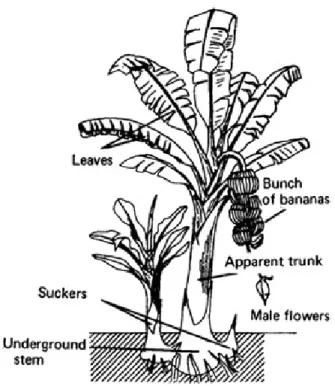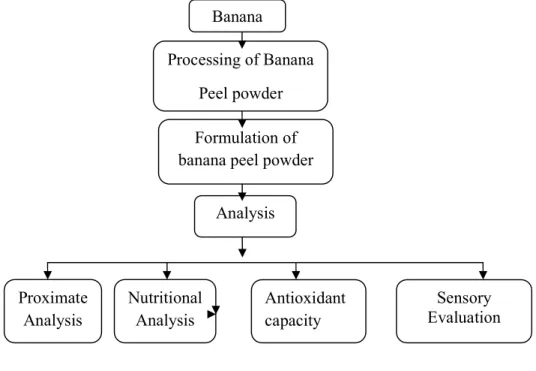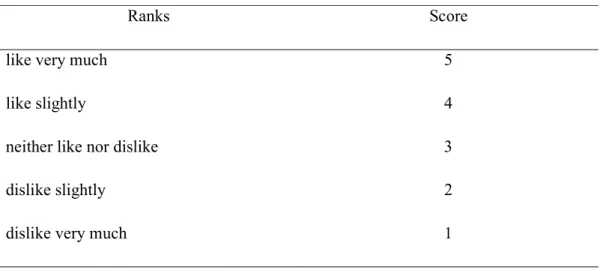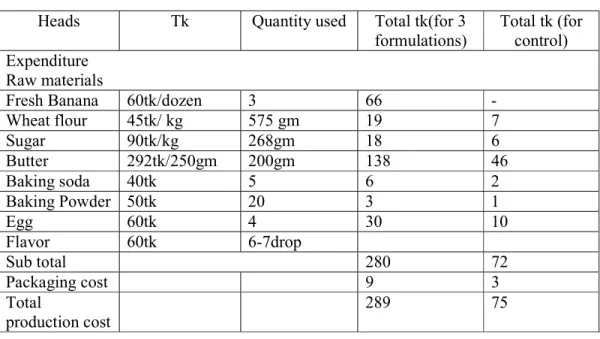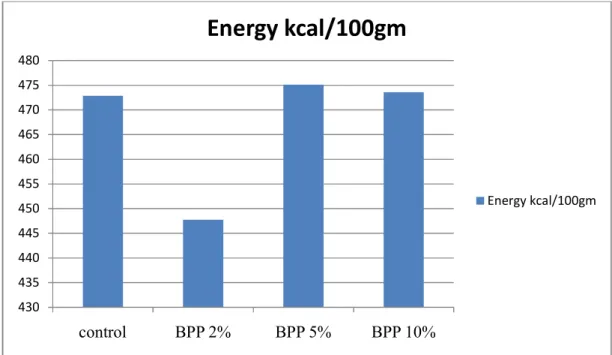This study investigates the production of cookies using ripe banana peel flour (BPF) with wheat flour (WF) in different proportions. Three different formulations were made from banana peel flour and then their proximate compositions were tested. Banana peel is an important by-product rich in different nutrients that has been used to produce enormous food products (Khatun et al.,2021).
It is one of the most favorite fruits in the world and the fourth most important crop produced worldwide (Guyle`ne Aurore et al., 2009). Almost all the identified cultivars originate from two diploid species, Musa acuminata and Musa balbisiana, in which the Cavendish variety is the most common (Khoozani et al., 2018). BPF contains significantly more protein, crude fiber and digestible starch than pulp, making it more effective as a functional additive (Khoozani et al., 2019).
Dietary fiber is known to reduce the risk of disorders such as constipation, irritable bowel, colon cancer, cardiovascular diseases, diverticulitis and diabetes, according to (Aslam et al., 2014). Due to specialized eating patterns, changing consumer behavior, economic reasons and commercial demands, WF has been replaced with flour from fruit waste or by-products to produce baked items (Khatun et al., 2021). It is consumed by people around the world due to its mobility, ready-to-eat quality, affordability, extended shelf life and availability in a variety of flavors and tastes (Bakar et al., 2018).
The orange pulp contributes to the dietary fiber level of the biscuits, while the apple pomace is a rich source of polyphenols with antiproliferative and antioxidant action (Bakar et al., 2018).
Review of Literature
2013). The increasing demand due to population growth, as well as the development of cropped area and productivity, can be used to explain the increase in banana production (Vu Hung T. et al 2018). Use of Musacea plants as composite material and for energy production through decomposition Ultra VU (Clarke et al., 2007). The banana plant, one of the largest herb groups in the world, can reach heights of 15 meters, and its fruit is categorized as climacteric (Cordenunsi et al.,1995).
Aspergillus niger uses banana peel as an affordable medium to produce citric acid (Kareem et al., 2011). Partial incorporation of banana peel into yellow noodles is an important way to control starch hydrolysis (Ramli et al., 2009). Bread, pasta, sweets and gluten-free items are the main starch-based foods targeted for enrichment with BF products (Khoozani et al., 2018). The antacid properties of the peel against stomach ulcers are also well documented.
Banana peel flavonoid leucocyanidin has been shown to dramatically thicken the lining of the stomach (Imam & Akter, 2011). Flour made from banana peels has been used in the food industry as a thickener or source of carbohydrates (mostly dietary fiber) (Alkarkhi et al., 2011). Recently, there has been an increase in interest in studies of food components such as anthocyanins and other phenolic compounds, in part due to their antioxidant activity, which may be associated with health benefits such as a reduction in heart disease and cancer (Seeram et al., 2002). Antioxidant production occurs both inside the body and naturally in many foods (Alam et al., 2020).
Banana reduces the risk of blood pressure because it is the best source of potassium that maintains normal blood pressure and normal heart function (Kumar et al.,2012). Banana contains non-digestible fibrous cellulose, alpha-cellulose and alpha-glucans that can help restore the activity of the pelvis (Kumar et al., 2012). Bananas contain vitamin C, an antioxidant that reduces the risk of cancer (Ranjha et al., 2020).
It is a fortified food for baby as it contains vitamins A, B 2, B 6, C, E, Niacin, Folate and Pantothenic acid, as well as potassium, fibre, calcium, magnesium, phosphorus, selenium, iron (Kumar et al al., 2012). With the help of banana juice, treatment of leprosy, fever, digestive problems, nosebleeds and insect bites can be done (Rita et al., 2020). Cookies have the potential to be used as carriers of dietary fiber due to their widespread consumption (Rahman et al., 2020).
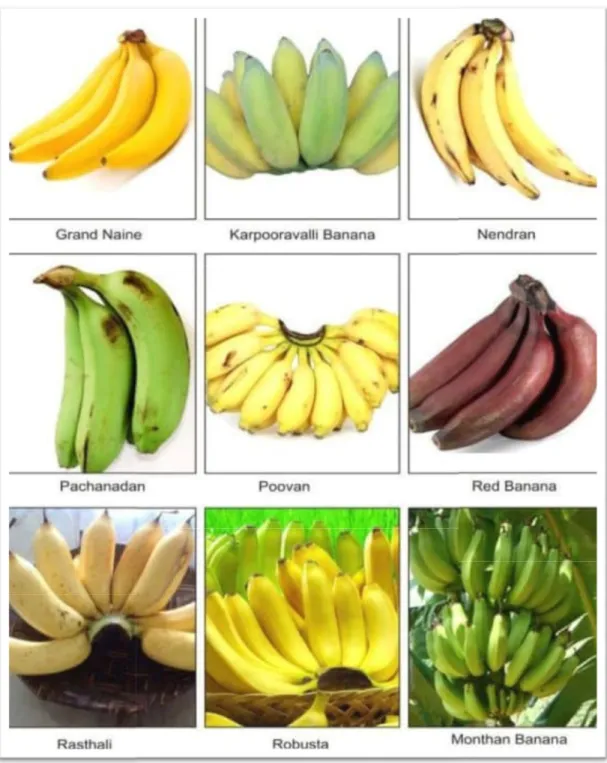
Materials and Methods
Then add 1 to 2 drops of banana flavor to the batter and blend it again. The most important and frequently used parameter in the processing and testing of meals is moisture determination. The crude fat content of the samples was determined according to AOAC (2016) procedures using a soxhlet instrument.
This causes proteins to be oxidized and destroyed and organic nitrogen to be converted into ammonia, which then remains in the acid mixture as ammonium bisulfate. The mixture was filtered through a shirt cloth and the residue was then rinsed thoroughly in hot water to remove any residual acid. The mixture was boiled for 30 minutes while maintaining the same volume, and then filtered through a shirt cloth.
The crucible was heated in a muffle furnace for two to three hours at 650°C, cooled and then weighed once more. 1 drop of nitric acid was added and then on a low flame the sample in the crucible was burnt and the crucible was then kept in a muffle furnace and the temperature was set to rise to 650○ Cand keeping it constant for three hours. By estimating the difference between the nitrogen-free extract and the carbohydrate content (NFE), it was specified as the deviation from 100 from the sum of the other nearby components.
With some minor adaptations of the method published by Azlim et al. 2010), the antioxidant capacity of the extracts was measured by the DPPH assay. The mixture was then gently mixed and left to stand at room temperature for 30 minutes. The decrease in intensity of the samples against the standard DPPH solution acted as a reference for scavenging mobility.
The cost of the banana peel cookie was calculated based on the total cost of the ingredients used to make the cookie. A 5-point demotion was used to evaluate the characteristics of the sample, with a varying score of -1 (dislike at all) and score of 5 (such as extreme). Ten panelists agreed to participate in the experiment, the results of which are described below.
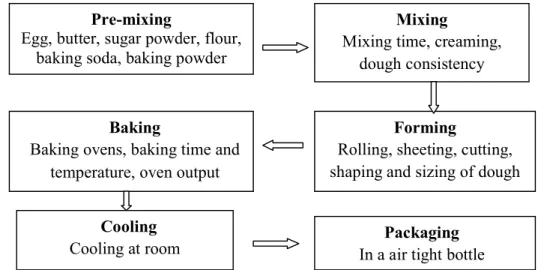
Results
Legends: Mean ± SD and values in the same column with the same superscripts are statistically significant (P<0.05). Nutritional value of Banana crackers is shown in Table 4.3, almost all samples differ significantly. For formulated biscuits, 70g of banana peel powder was found from three dozen bananas and 25.5gm of BPP was used.
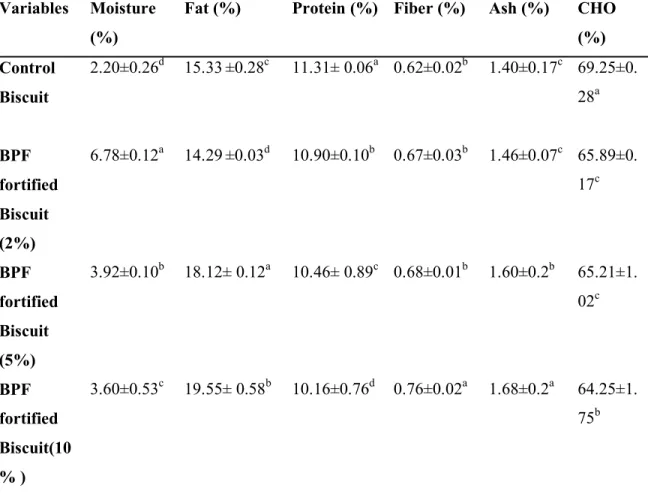
Discussion
Bake items' moisture content, which measures stability and sensitivity to microbiological contamination, as well as water activity and activity index, correlates directly with how long they may be stored (Mashu et al., 2019). Addition of egg, butter did not significantly increase the level of protein, but it can meet the protein requirement with addition of banana peel flour. According to USDA, the fat content of crackers is 8.5gm which can vary depending on processing.
The fat content of biscuits other than banana peel flour is higher than the standard limit. This is due to the higher fat content present in the banana peel and then to the addition of raw materials. So, it can be concluded that the product has the highest possibility to become a functional food as it contains a large amount of fiber, fat, protein compared to WF biscuit.
DPPH was a widely used substrate for the evaluation of antioxidant activity, especially in the study of free radical scavenging abilities of biological and chemical compounds. Sample C had a relatively higher level of antioxidant capacity. 2.605) than that of sample A (0.984). The antioxidant potential of baked goods is increased by processing steps such as baking and microwaving, according to studies (Baba et al., 2015). The addition of banana peel powder reveals that the increase in the amount of antioxidant. Page | 29 capacity in the flour makes the hydrogen transfer atoms work more effectively (Krystaijan et al., 2015).
This is a fantastic conclusion because the quality of a food ingredient can be judged in part by its taste. Most of the participants identified the flavor of banana peels since the inclusion of flour, banana peels still give off a distinctive flavor. The Maillard process, which is one of the most important sources of flavor, is supposed to be enhanced using an oven or a microwave.
In addition to protein, one of the chemicals suspected to be the source of the bitter or astringent taste is fat. The presence of tannins in foods is likely to result in a bitter taste in cookies when banana peels are added to the flour. It is well known that phosphatidylcholine, amino acids and peptides have a bitter taste (Damayanthi et al., 2007). Additionally, moist heating will increase the yellow component while decreasing the white component.
Conclusion
Recommendations and Future Perspectives
Comparison of the physicochemical properties of banana pulp and peel meal prepared from green and ripe bananas. Use of mango waste material (peel, kernel) to improve the dietary fiber content and antioxidant properties of cookies. Fruit and vegetable intake and overall cancer risk in the European Prospective Cancer and Nutrition Study (EPIC).
Hernawati, A Aryani and R Shintawati (2017).Physical characteristics, chemical composition, organoleptic test and microbial count in bscuit with addition of banana peel flour. Production, application and health effects of banana pulp and peel flour in the food industry. Fortification of cookies with bee pollen and its effect on the physicochemical and antioxidant properties of cookies.
Banana (Musa spp) from peel to pulp: ethnopharmacology, source of bioactive compounds and its importance for human health. Local banana peels (Musa Sp.) Methanol extracts grown in Bali International Journal of Agriculture, Environment and Bioresearch.
